Your Ankle Pain Podiatrist in Lancaster, PA
Ankle Care
At Martin Foot and Ankle in South Central Pennsylvania, you'll find the best-trained and most experienced team dedicated to your ankle care needs. Our doctors specialize in a wide range of conditions and pathologies, ensuring that you receive expert care tailored to your specific needs. With a team of board-certified podiatrists, we prioritize precision, expertise, and compassion in every aspect of your treatment journey.
Experience the difference that specialized care can make in restoring your ankle health and mobility. Whether you're seeking treatment for an injury, chronic condition, or preventive care, our podiatrists are here to provide personalized solutions to help you get back on your feet with confidence.
Take the first step towards healthier ankles today – schedule a consultation with our specialists at Martin Foot and Ankle.
Achilles Tendonitis
At Martin Foot and Ankle, we offer comprehensive care for Achilles tendonitis, a common overuse injury causing pain and inflammation in the Achilles tendon. Some common symptoms of Achilles tendonitis include stiffness, swelling, and tenderness in the back of the ankle.
Our team of experts will carefully evaluate your condition and create a customized treatment plan to help alleviate your pain and improve mobility. Our treatments focus on reducing strain, promoting healing, and preventing future injuries through a combination of physical therapy, orthotics, and lifestyle modifications.
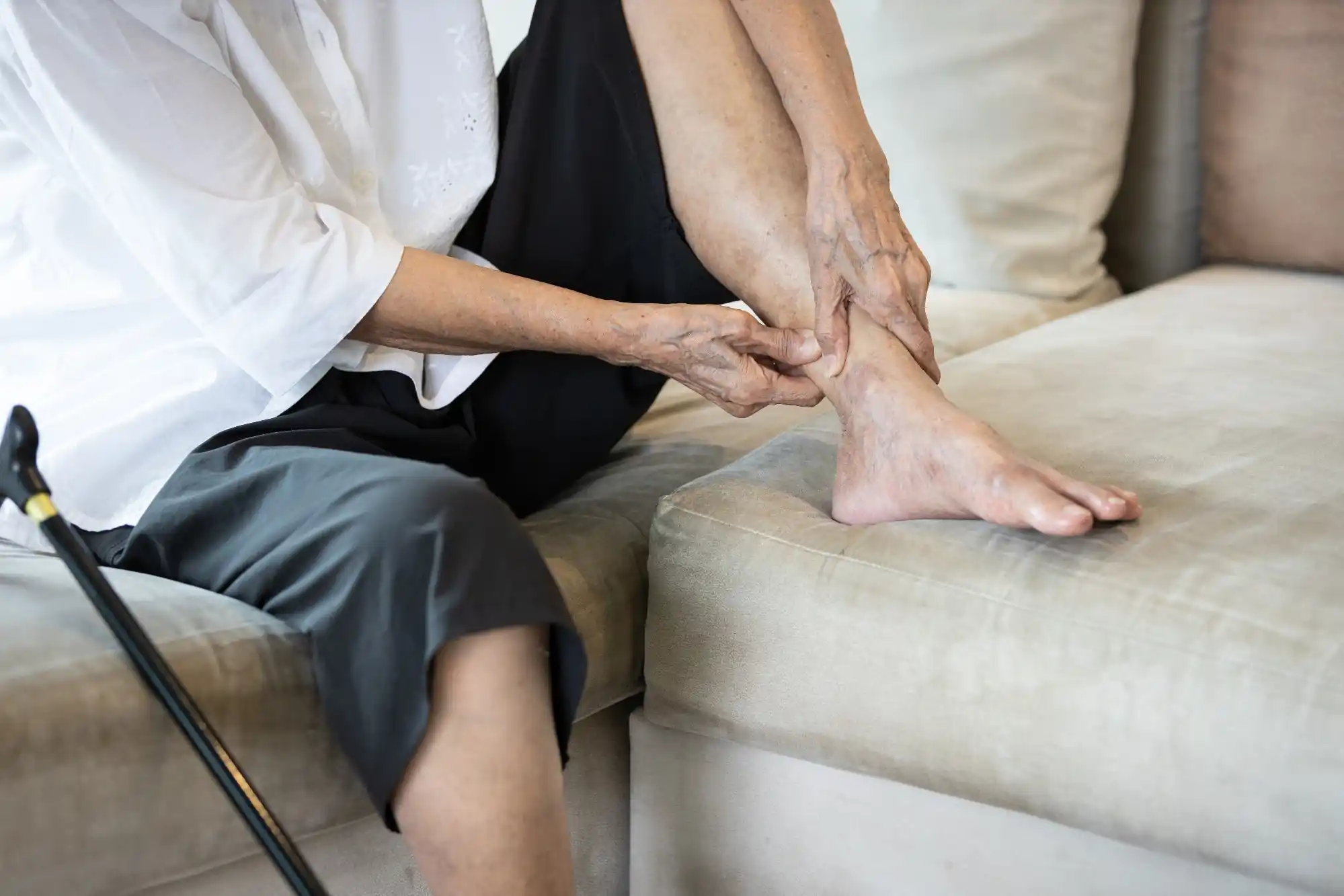
Heel Spurs
Heel spurs can be a source of intense heel pain. Stemming from calcium deposits on the underside of the heel bone, these bony protrusions can make daily activities such as walking or standing unbearable.
At Martin Foot and Ankle, our team specializes in treating heel spurs with a variety of non-invasive techniques. By using custom orthotics and targeted stretching exercises, we can help reduce inflammation and provide long-term relief from heel pain. In severe cases, surgery may be necessary to remove the spur and repair any damage to surrounding tissues.
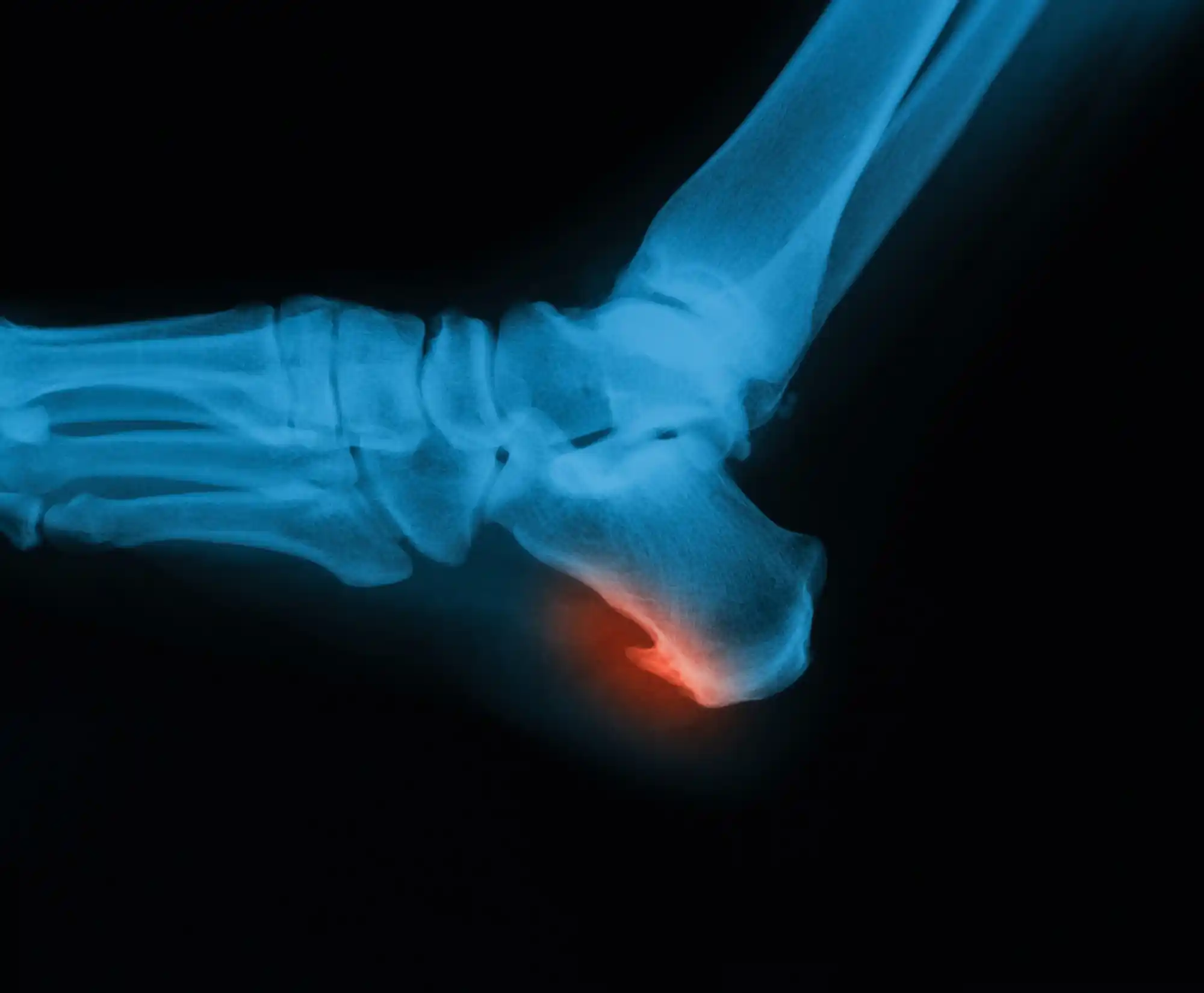
Ankle Sprains
Ankle sprains can happen to anyone, from athletes to those simply walking down the street. While they may seem like a minor injury, ankle sprains can lead to chronic pain and instability if not properly treated.
Our team at Martin Foot and Ankle has extensive experience in treating ankle sprains. We take a tailored approach that includes RICE therapy (Rest, Ice, Compression, Elevation), bracing, and rehabilitation exercises to strengthen the ankle and prevent re-injury.

Ankle Surgery
For complex ankle conditions, surgery may be required to ensure proper healing and prevent further complications. Our team of skilled surgeons at Martin Foot and Ankle has the expertise to perform a variety of ankle surgeries, from simple procedures like removing bone spurs to more complex reconstructions.
We understand that surgery can be intimidating, which is why we provide our patients with comprehensive pre- and post-operative care. We will work closely with you to create a personalized treatment plan and guide you through every step of your recovery process.
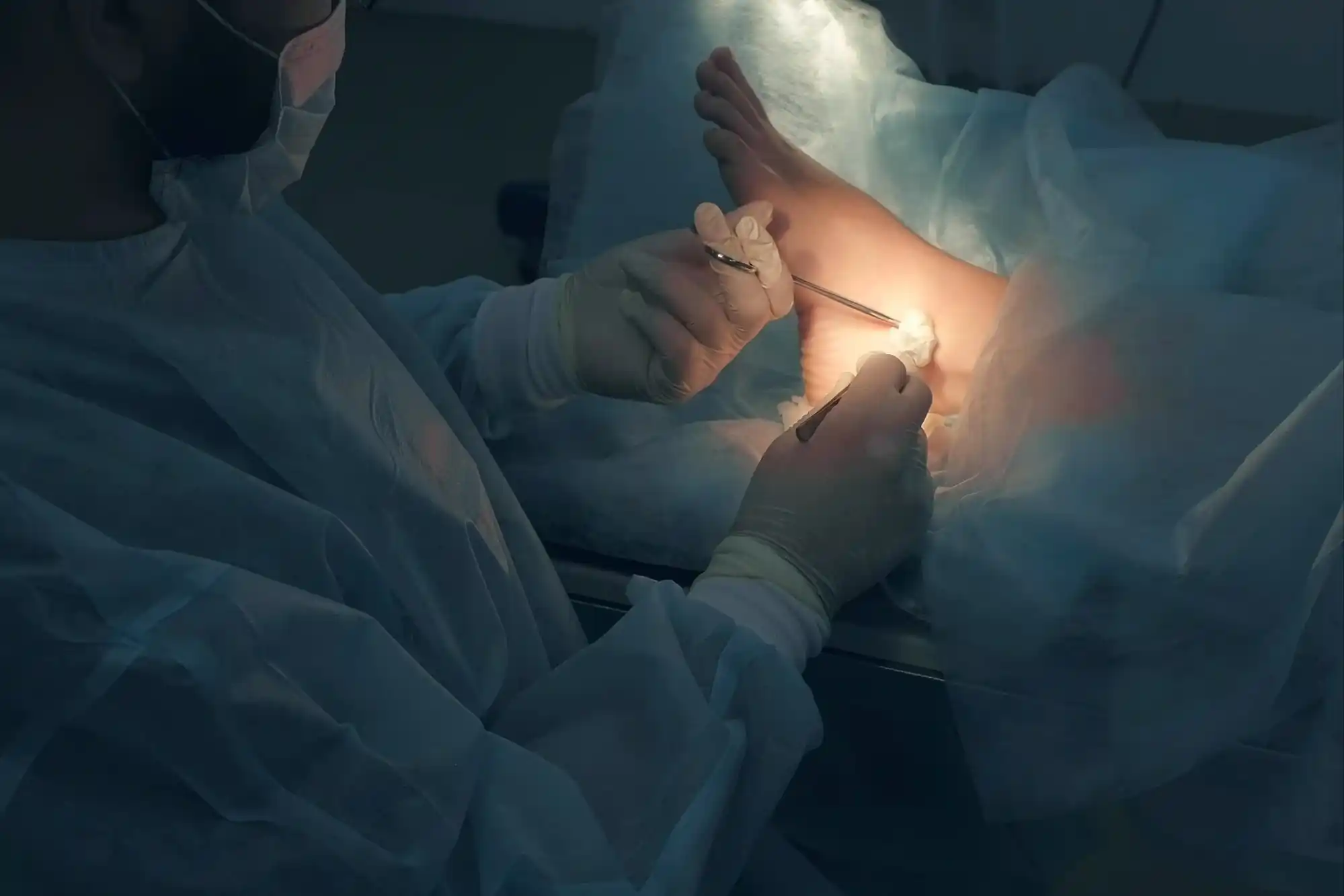
Ankle Arthroscopy
Minimally invasive ankle arthroscopy is a specialized procedure offered at Martin Foot and Ankle to diagnose and treat various ankle joint conditions with precision and minimal downtime for the patient.
During this procedure, a small camera is inserted into the ankle joint through a small incision, allowing our surgeons to view and treat any abnormalities or injuries.
Arthroscopy can be used for different purposes, including removing damaged tissue or bone fragments, repairing ligaments or tendons, and smoothing out cartilage surfaces. This innovative method offers numerous advantages over traditional open surgery, such as smaller incisions, less scarring, and quicker recovery time.
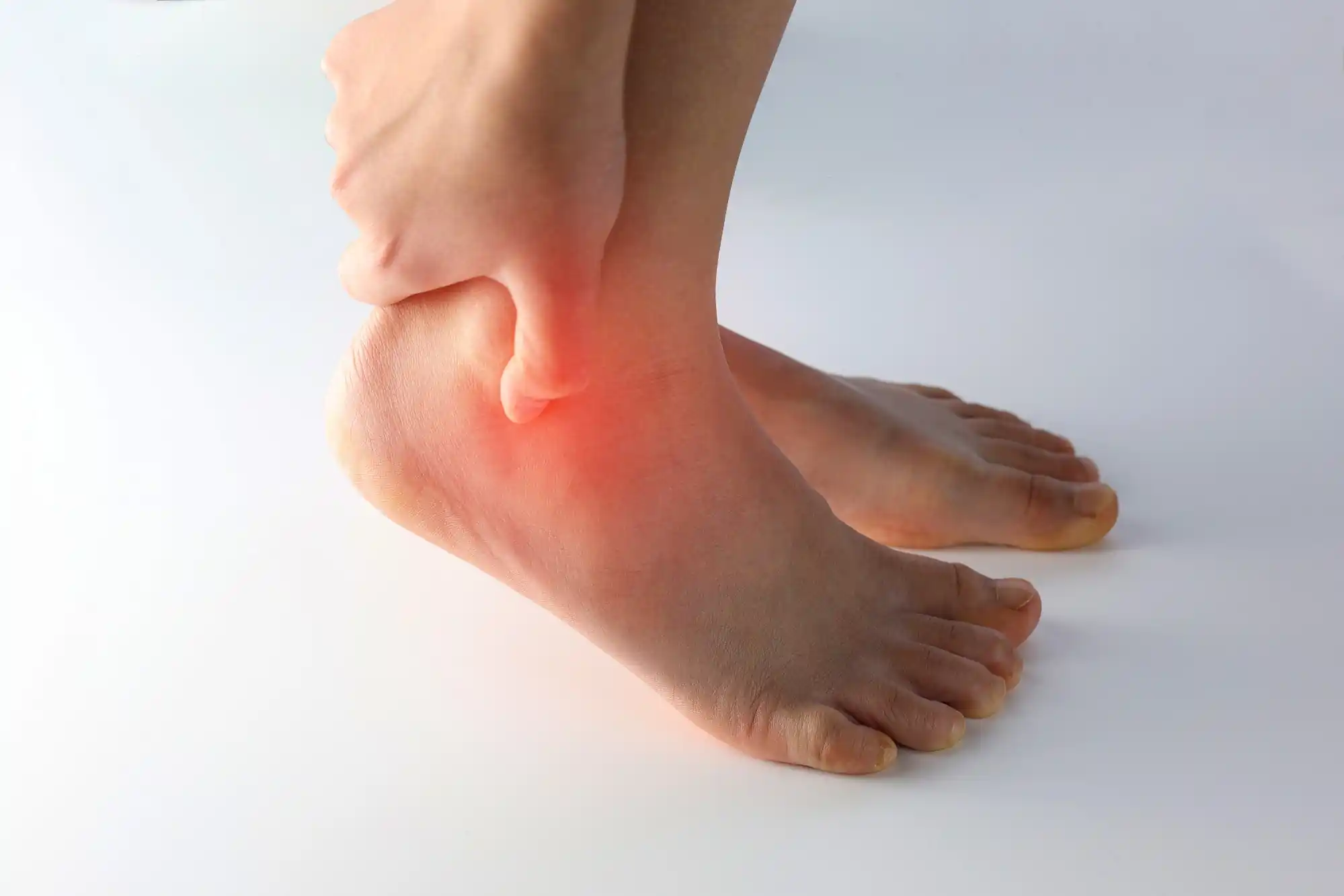
Talar Dome Injuries
Our experienced podiatrists excel in diagnosing and treating talar dome injuries, providing personalized care plans to address the specific needs of each patient for optimal recovery and long-term ankle health.
These types of injuries can occur from a sudden impact or repetitive strain, causing pain, swelling, and limited range of motion. If left untreated, talar dome injuries can lead to chronic pain and instability in the ankle joint. Using advanced imaging techniques and clinical expertise, our team can accurately assess the severity of the injury and recommend the best course of treatment.
Treatment options may include physical therapy to strengthen the surrounding muscles, immobilization with a cast or brace, or surgery for more severe cases. Our surgeons are skilled in performing ankle arthroscopy to repair any damage to the talar dome and promote healing.

Avascular Necrosis
Avascular necrosis, a condition that affects blood flow to the bone, is managed with expertise at Martin Foot and Ankle through a combination of conservative treatments and surgical options tailored to each individual's unique circumstances.
This condition can occur in any joint, but is most commonly seen in the ankle and can be caused by trauma, excessive alcohol consumption, or long-term use of corticosteroids. Our team has extensive experience in diagnosing and treating avascular necrosis, using advanced imaging techniques and clinical expertise to accurately assess the severity of the injury.
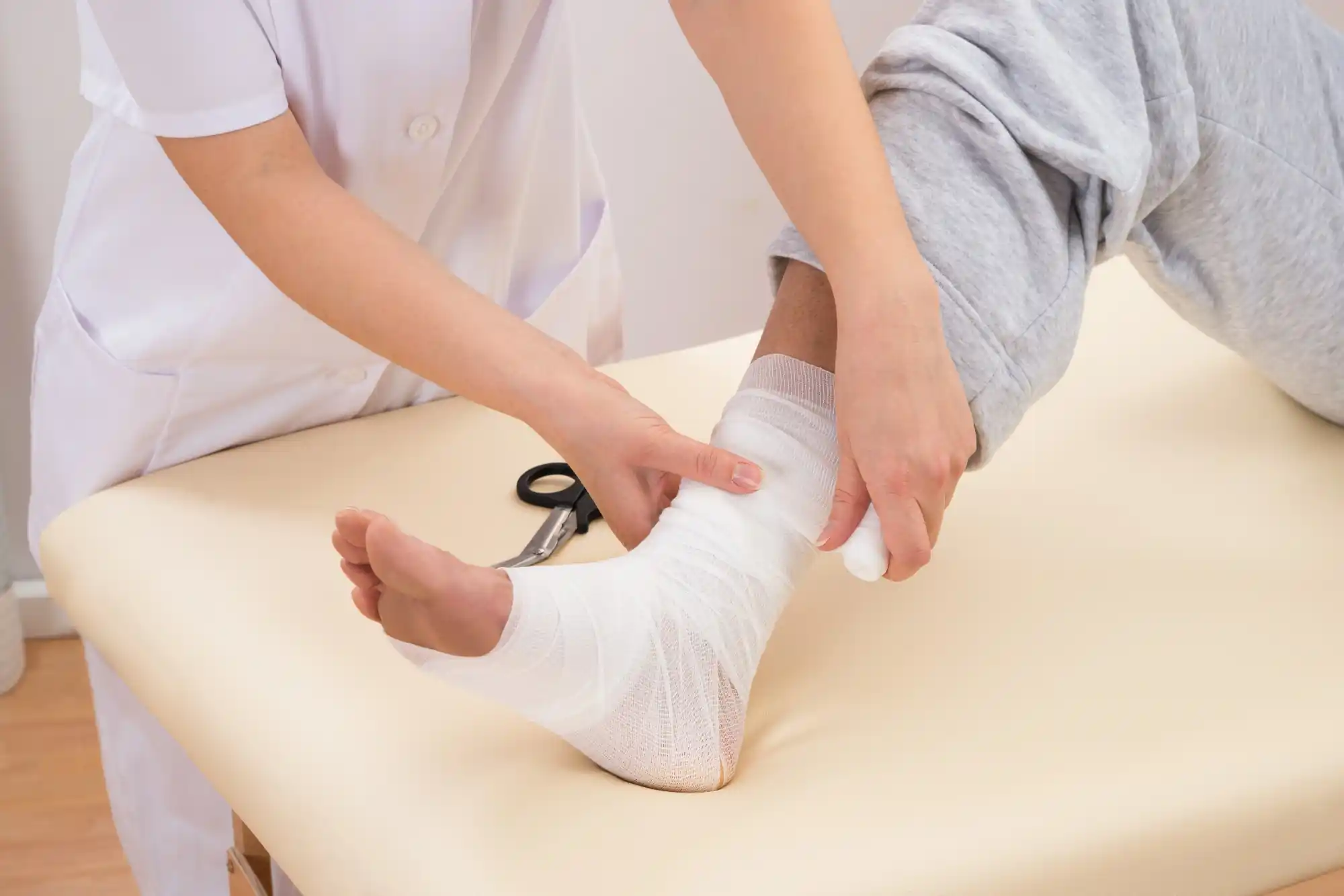
Adult Acquired Flat Foot
Adult acquired flat foot is effectively treated at Martin Foot and Ankle with custom orthotics, physical therapy, and in some cases, surgical correction to restore proper foot alignment and function. This condition can cause significant pain and discomfort, as well as difficulty with walking and other daily activities. Our team of foot and ankle specialists utilizes state-of-the-art technology and techniques to develop a personalized treatment plan for each patient, helping them regain mobility and improve their quality of life.
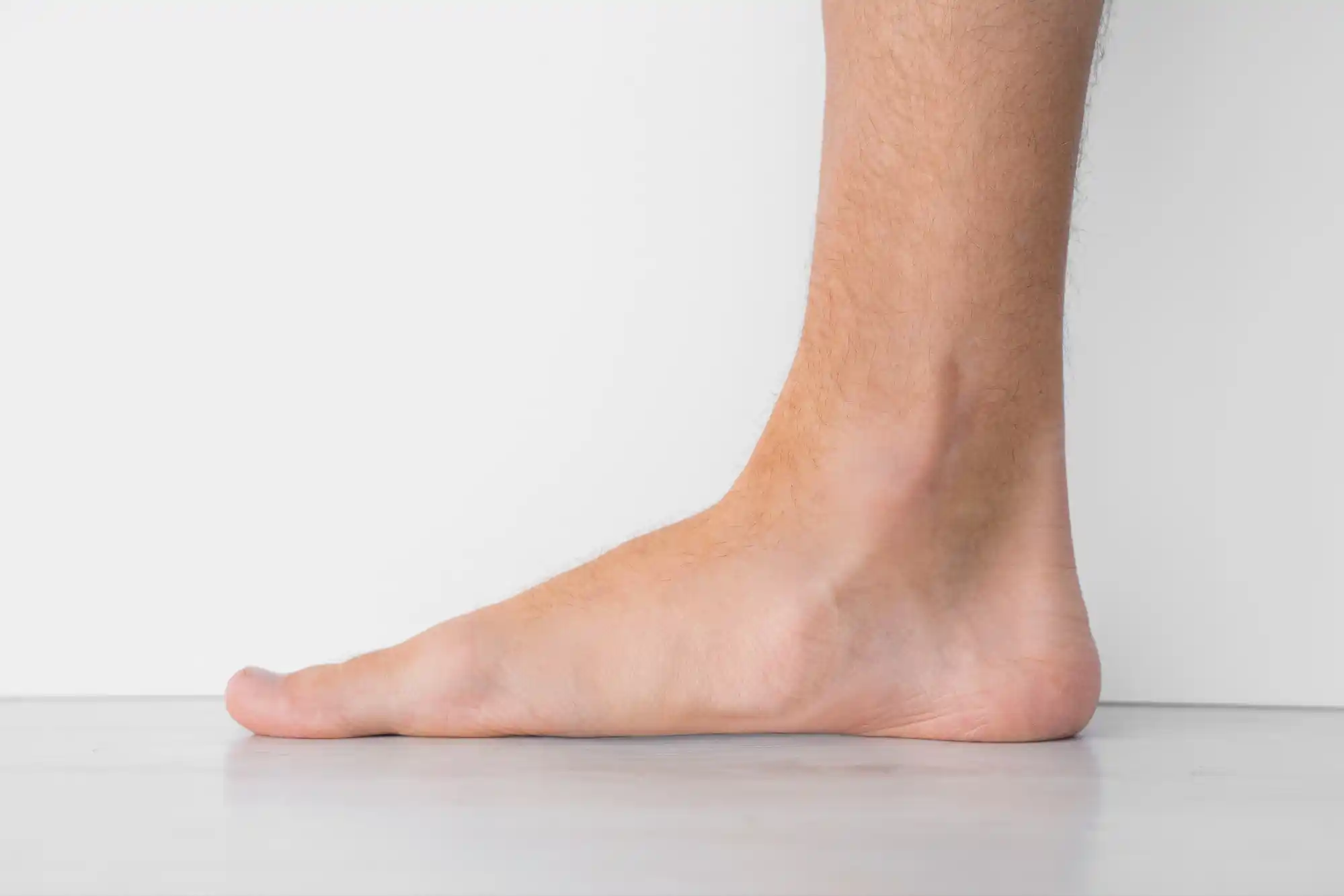
Ankle Fracture
Ankle fractures are skillfully managed at Martin Foot and Ankle with a comprehensive treatment approach that may include casting, bracing, or surgical intervention to ensure proper healing and function restoration.
Our team of skilled foot and ankle specialists works closely with each patient to develop a tailored treatment plan that addresses their unique needs and goals. With extensive experience in the treatment of ankle fractures, we are dedicated to providing exceptional care and helping our patients return to their normal activities as quickly and safely as possible.
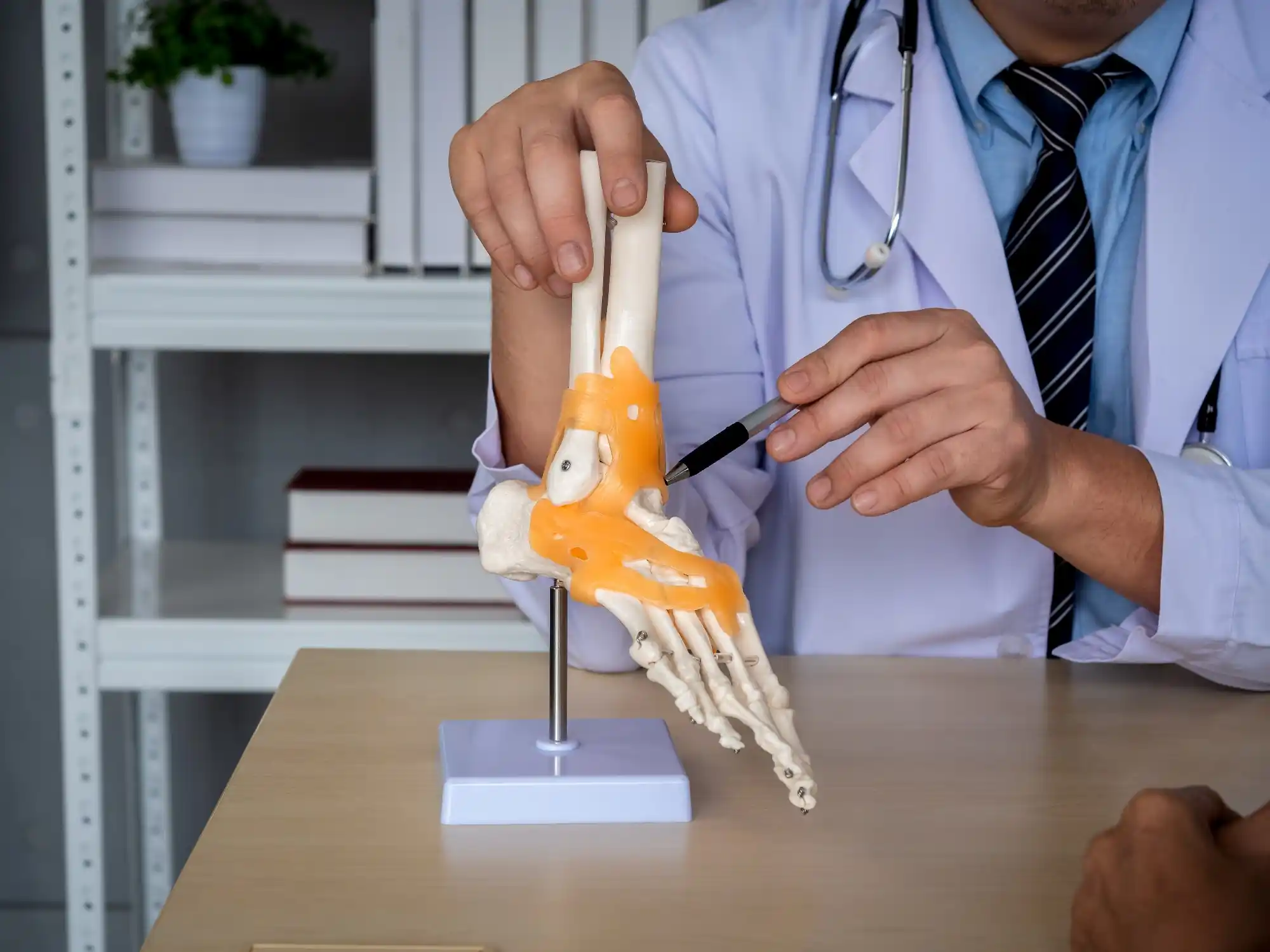
Joint Replacement
For severe ankle joint degeneration, joint replacement surgery may be recommended by our expert podiatrists to relieve pain, improve mobility, and enhance quality of life. This surgical procedure involves removing the damaged part of the ankle joint and replacing it with an artificial joint made of metal, plastic, or ceramic materials.
Our team will carefully evaluate each patient to determine if they are a good candidate for ankle joint replacement, and will work closely with them before and after surgery to ensure optimal results. We understand the importance of maintaining proper foot and ankle function, and we are committed to helping our patients achieve long-term success with their joint replacements.
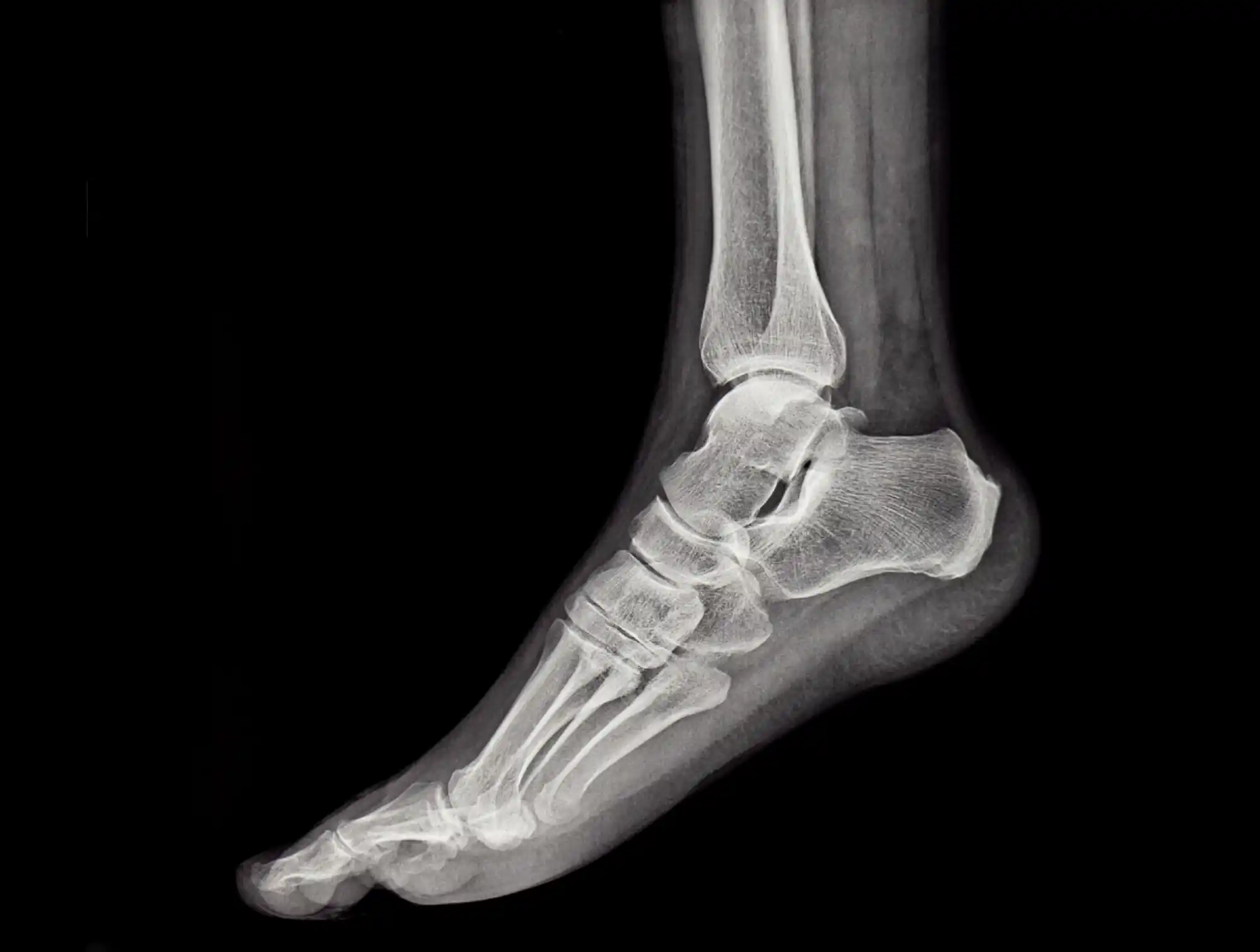
Osteoarthritis
Osteoarthritis is a common form of arthritis that affects the ankle joint, causing pain, stiffness, and difficulty with movement. At Martin Foot and Ankle, we understand how debilitating this condition can be for our patients. That's why we offer a comprehensive approach to managing osteoarthritis of the ankle.
Osteoarthritis of the ankle is effectively managed at Martin Foot and Ankle through a combination of non-surgical interventions such as medication, injections, physical therapy, and when necessary, surgical options tailored to each patient's needs.

Tarsal Tunnel Syndrome
At Martin Foot and Ankle, we also specialize in treating tarsal tunnel syndrome, a condition where the tibial nerve becomes compressed as it travels through the ankle. This can cause pain, numbness, and tingling sensations in the foot.
Our experienced team of podiatrists will work with patients to create a personalized treatment plan that may include physical therapy, orthotics, or surgery.
We understand the impact that tarsal tunnel syndrome can have on daily life and aim to provide our patients with long-term relief and improved mobility through our effective treatment options.

Nerve Entrapment
Nerve entrapment in the ankle can cause significant discomfort and affect daily activities. Our podiatrists are highly trained in identifying and treating nerve entrapment, utilizing advanced techniques such as ultrasound-guided injections to provide targeted relief.
We also work closely with our patients to address underlying causes of nerve entrapment, such as wearing ill-fitting shoes or overuse injuries. Our goal is to help our patients regain full function and improve their overall quality of life. Whether through conservative treatments or surgical interventions, we are dedicated to finding the best solution for each patient's needs.

Wound Care
Complex wounds related to the ankle are meticulously managed at Martin Foot and Ankle, with a multidisciplinary approach that includes wound debridement, dressings, infection control, and offloading techniques to promote healing and prevent complications.

Foot & Ankle Sports Injuries
Sports-related ankle injuries are effectively diagnosed and treated at Martin Foot and Ankle, with a focus on rapid recovery, rehabilitation, and preventive strategies to help athletes return to their sport safely and swiftly.
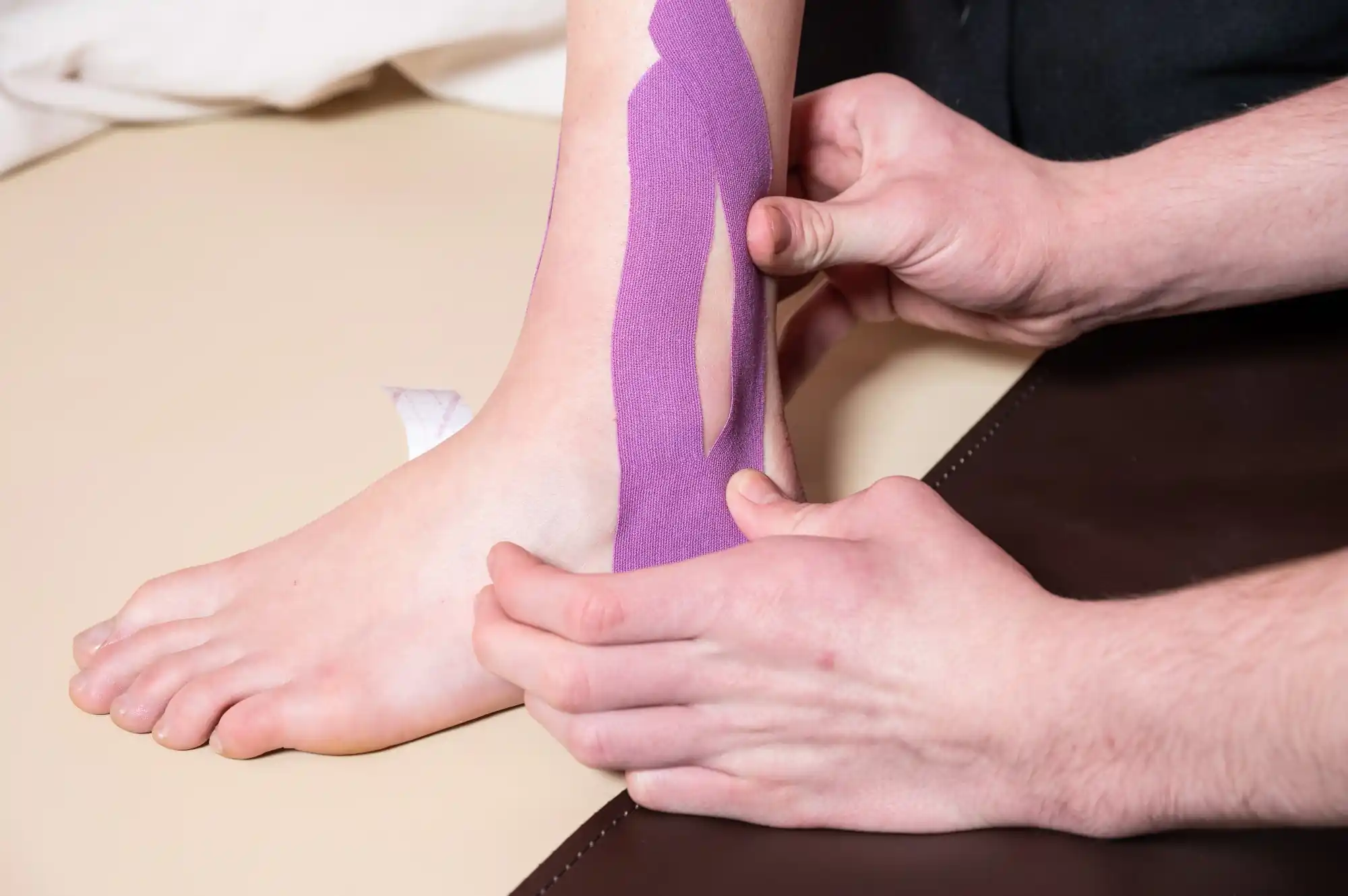
Pediatric Foot & Ankle Care
Pediatric ankle conditions are approached with specialized care and expertise at Martin Foot and Ankle, ensuring that children receive gentle, effective treatments tailored to their unique needs, promoting healthy foot development and movement.

Frequently Asked Questions
What are some of the most common foot and ankle problems?
Some of the most common foot and ankle problems we see include plantar fasciitis, Achilles tendonitis, ankle sprains, bunions, and flat feet.
How do I know if I need foot reconstruction or surgical intervention?
If you're experiencing persistent foot pain, instability, deformities, or limited mobility that impacts your daily activities, it's advisable to consult with our podiatrists at Martin Foot and Ankle. Through a thorough evaluation and diagnostic tests, our specialists can determine whether foot reconstruction or surgical intervention is necessary to address your condition effectively and improve foot function.
Do you provide specialized pediatric foot care services at Martin Foot and Ankle?
Yes, we offer specialized pediatric foot care services at Martin Foot and Ankle. Our experienced podiatrists understand the unique foot health needs of children and provide gentle and effective treatments for conditions such as clubfoot, flat feet, gait abnormalities, and congenital deformities. We prioritize early intervention and tailored care to ensure healthy foot development and function in pediatric patients.
How can I get started with expert foot treatment near me?
The team at Martin Foot and Ankle is dedicated to providing you with the best possible care. To get started, simply request an appointment online at your nearest location, or reach out to us at (717) 757-3537.